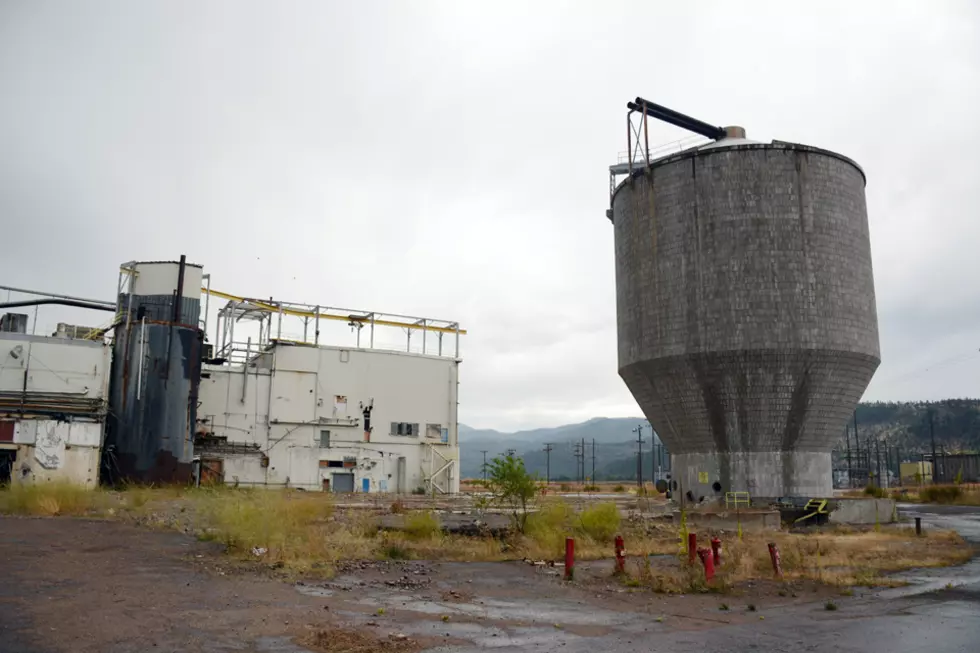
Sampling of Smurfit groundwater contamination to start in fall
Laura Lundquist
(Missoula Current) After getting initial agreement from the landowners, the Environmental Protection Agency says additional pollutant sampling at the Smurfit Stone mill site will begin this fall.
EPA project manager Allie Archer told the Frenchtown Smurfit Stone Community Advisory Group Thursday that an EPA team met with the mill site owners - International Paper, WestRock, and Wakefield-Kennedy, collectively known as the potentially responsible parties - in late June to discuss the proposal for additional sampling of the groundwater, sludge ponds and wastewater treatment areas on the site. While she has yet to see any work plans, the potentially responsible parties did respond with a proposal to do the additional work.
As owners of the land, the potentially responsible parties have the responsibility to pay for the EPA assessment and cleanup, but in the past, they have occasionally pushed back on paying for some work.
“They didn’t say no. They basically have come to the table and they want to conduct the work to conduct the additional sampling,” Archer said. “Groundwater sampling will occur this fall.”
Archer said the plan for this fall is to sample existing wells for additional contaminants that weren’t sampled previously. The contaminants include a suite of polychlorinated biphenol compounds or PCBs, which were used in machinery and electrical transformers before being banned in 1977. More wells will be sampled in 2024 to complete the groundwater assessment. Then they’ll move on to the sludge and wastewater sampling.
Missoula County and trustees, including the Confederated Salish and Kootenai Tribes, the U.S. Forest Service and state entities like Fish, Wildlife & Parks, have for the past few years pushed the EPA to do more sampling before writing the mill site’s risk analysis. The sampling already conducted provided just enough information to raise concerns about how toxins were actually deposited on the site, but not enough to sufficiently answer the question.
Bob Wintergerst, Forest Service regional environmental engineer, has been concerned that the amount of sampling was insufficient. He said that prompted Regional Forester Leanne Marten to send a letter to the EPA voicing that concern.
“We are looking at a complex area that Mother Nature sculpted through various flows and changes in river patterns. Those river patterns are a conduit for potential contamination should contamination exist. Those patterns are very complex and require a great deal of sampling to verify statistically that there is either a problem or not a problem,” Wintergerst said. “From what I hear tonight, the EPA is saying additional sampling may be necessary. So we are in support of that.”
Elena Evans, Missoula City-County Environmental Health manager, was pleased that progress is being made toward additional sampling and highlighted the reasons why it was so important for an area as large as the mill site. If only a few spots are sampled, little to nothing is known about the areas in between so the characterization of the area is incomplete.
“Risk will determine where cleanup is targeted. And where cleanup is targeted is dictated by the sampling,” Evans said.
A few at the meeting were worried that the potentially responsible parties might not be willing to do all the work requested and asked what the EPA would do then. Archer said the EPA “has committed to answer any concerns presented.”
“We know exactly what everyone wants because we put the work in on the front end,” Archer said, referring to public meetings this spring that defined Data Quality Objectives. “Everyone wants - for a different motivation maybe - to get out of here as quickly as possible. We want the best cleanup that addresses concerns efficiently. We don’t want to waste time dragging our feet. I’m really happy about where we’re going.”
The additional sampling is needed to be sure the contaminants are removed in the eventual cleanup, but it extends the Superfund process. The additional data will have to be added into the risk assessment and then the EPA team will move onto the feasibility study. So the cleanup decision might not be made until 2028.
The community advisory group discussed the fact that many citizens get impatient with the Superfund process and incorrectly complain to them that nothing is happening. Few want to get involved in a process that appears to be just inching along since 2015 while the landowners urge doing the bare minimum so the land can be freed up.
During the June meeting, Wakefield owner and developer Steve Malsam asked why the EPA couldn't shrink the boundary around the cleanup area so housing development could begin in some spots. He suggested a meeting with the advisory group and EPA to work that out.
"I can't do anything, even in areas that could be developed," Malsam said in June. "At some point, we need to get some kind of common agreement among the different parties so we can present a plan that will maybe allow some development to happen."
Advisory group member Jeri Delys said Thursday it’s important to get and keep the community involved because they’re the ones who stand to gain or lose once the EPA is done. The group discussed ways to do more outreach.
“There’s a little bit of a disconnect in getting people to understand the Superfund process. It’s a difficult thing to tackle because it’s complicated,” Delys said. “I’ve been in this area since 1983, and I’ve seen the mill site at full capacity, I’ve seen it as it is now. A lot of people feel like they want to see development and it takes too long. Well, it takes too long because it’s complicated. Getting people to understand the complexities of it, the science, why we do what we do, in a way that is easy for people to understand, is a big part of what we want to try to do with our operating procedures.”
Contact reporter Laura Lundquist at lundquist@missoulacurrent.com.
